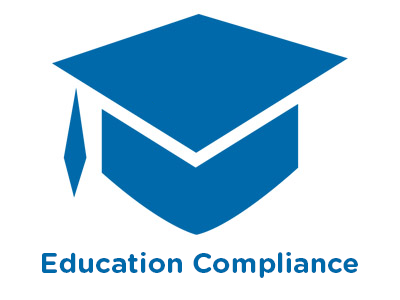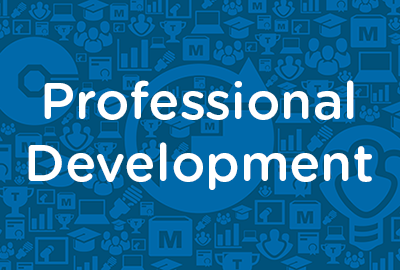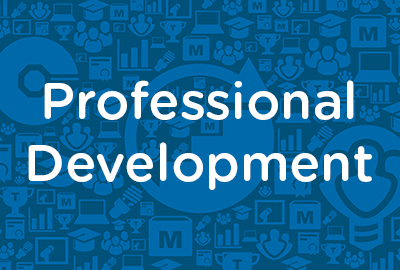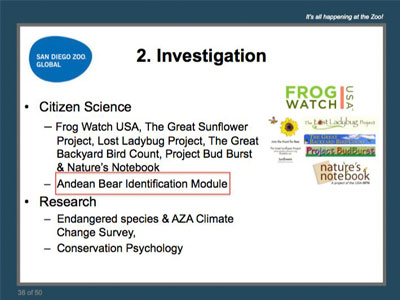 |
School-Age Care as a Family Service: Emphasis on Relationship Building |
2.00 |
Strong, positive, cooperative relationships with parents and families are at the heart of quality school-age programs. Unfortunately, positive relationships with parents and families are not always easy to achieve because parents, like children, have widely varying personalities; some are easier to reach than others. Parents in school-age programs have different ideas, values, concerns, knowledge, pressures, lifestyles, plans, dreams, resources, and constraints. Staff who are successful in building positive relationships begin by recognizing the importance of accepting parents as the most important people in children’s lives, regardless of differences among them. They understand that staff attitudes toward parents can have a strong effect on whether or not staff can establish positive relationships with parents. Staff in quality programs make a commitment to learning as much as possible about parents’ needs, interests, wants, and concerns and develop effective strategies for making positive connections with parents. |
 |
The Role of the Site Leader |
2.00 |
Supervising adults is challenging under any circumstances, but in out-of-school time, supervision can be even more challenging because those supervised needs to be independent workers who are creative, energetic, enthusiastic and calculated risk takers. The afterschool site leader must have an arsenal of skills and strategies to be both a leader and a supervisor. This course offers a basic overview of the roles and responsibilities of the site leader or supervisor and how those roles support a culture of team excellence and mutual support. |
 |
Homework Assistance |
2.00 |
Supporting children and youth with their homework is a basic element of nearly all out-of-school time programs, yet it is something that can be challenging for many OST professionals. During this course, participants examine the importance of homework assistance, as well as strategies and skills to provide effective homework assistance. |
 |
Motivation: Identifying, Planning, and Implementing: The Core Four |
1.00 |
Surrounding the positive mental attitude are the Core Four components. These key areas of focus are critical to your motivation and your success. The Core Four elements are health, competence, relationships, and organization. Each of these elements requires focused attention. Without attention to one area, your life will be out of balance. Each area complements the other and is powered by your positive attitude.
In this course you will learn to: strive for good health to foster a positive mental attitude, maintain your competence to nurture a positive mental attitude, improve your relationships to indirectly improve a positive mental attitude, and strive to be organized to encourage a positive mental attitude. |
 |
Motivation: Identifying, Planning, and Implementing: The Core Four (Instructor Guide) |
1.00 |
Surrounding the positive mental attitude are the Core Four components. These key areas of focus are critical to your motivation and your success. The Core Four elements are health, competence, relationships, and organization. Each of these elements requires focused attention. Without attention to one area, your life will be out of balance. Each area complements the other and is powered by your positive attitude.
In this course you will learn to: strive for good health to foster a positive mental attitude, maintain your competence to nurture a positive mental attitude, improve your relationships to indirectly improve a positive mental attitude, and strive to be organized to encourage a positive mental attitude.
This Instructor's Edition of this course includes notes and suggestions to assist you in presenting the material, whether in an in-person classroom setting, or as an instructor-led online or distance-learning course. It also provides you with the answers to questions found in mid-lesson activities, as well as in the quiz that concludes the course. |
 |
Technology Coaching in Education |
0.75 |
Technology has become an integral part of education. This course covers the responsibilities, benefits, and challenges associated with technology coaching in education. It is designed to help teachers effectively integrate technology into the classroom to improve teaching outcomes. It is just one of the many K-12 education courses we offer. |
 |
Neurogenic Shock Reviewed |
1.00 |
Terms that are commonly heard, such as neurogenic shock and spinal shock often confuse EMS providers. Knowing the meaning of each term is only the beginning. In this overview, Dr. Jeremy Cushman offers a few pearls of wisdom that will assist EMS providers of all levels with the secondary assessment of patients who may have suffered life-threatening spinal trauma. Test: This multiple choice exam is designed to test your knowledge of the material you just reviewed. You have one attempt to gain an 70% or higher on this exam. Please take your time and answer each question carefully.
|
 |
Framing: Interviewing a Flight Medic |
1.00 |
The advent of Helicopter Emergency Medical Services (HEMS) has opened the door for care that is often superior to what can be done on the ground. Most providers will look to the speed of transport as the benefit that a helicopter can offer. This lesson is designed to allow the Ground Emergency Medical Service (GEMS) Provider a chance to think differently about HEMS. This interview sheds some light on how just one Flight Medic approaches her job. This enlightening talk will offer a GEMS provider the opportunity to value not just what HEMS can do for the patient but gain some insight as to how the people on the aircraft can make a difference to the persons in need of assistance. Final Exam: This multiple choice exam is designed to test your knowledge of the material you just reviewed. You have TWO attempts to gain a 70% or higher on this exam. Please take your time and answer each question carefully. |
 |
After School Improvement Series: Outdoor Environments |
0.50 |
The After School Improvement Series: Outdoor Environments course will:
Describe different types of outdoor environments, along with the opportunities and challenges each one offers.
Discuss the role outdoor environments play in encouraging children to be active, while promoting a range of different experiences.
Identify the steps you can take to ensure that the outdoor environment is safe and accessible for all children.
Explore how outdoor environments can be used to extend learning opportunities found in indoor environments.
|
 |
Overview of the Americans with Disabilities Act |
0.50 |
The Americans with Disabilities Act prohibits discrimination based on disability by protecting qualified individuals with disabilities from employment discrimination, and by requiring employers to provide reasonable accommodations. The Americans with Disabilities Act also protects qualified persons with disabilities from discrimination in many areas of higher education, including admission, academics, and research. It applies to all post-secondary educational programs, whether or not they receive federal financial assistance. |
 |
Building Upward: BLS Pharmacology Lesson 1—Albuterol |
1.50 |
The Building Upward Series is designed for the EMT who would like to review their basic skills and learn a little more than what was offered in the standard original course. If you are an EMT who is looking for a challenge and would like to know what questions to ask, this series is for you. Most BLS providers find the world of pharmacology to be one of the more confusing topics in prehospital medicine. This is the first lesson in a series that gives the BLS provider an opportunity to relate some advanced concepts to their practice as BLS providers. We begin with the commonly used medication albuterol sulfate and discuss many fundamental concepts that every provider should know when administering medications in a prehospital setting. Final Exam: This multiple choice exam is designed to test your knowledge of the material you just reviewed. You have two attempts to gain a 75% or higher on this exam. Please take your time and answer each question carefully. |
 |
Course 33: Youth Development Trends: Focus on Older Youth |
2.00 |
The Center for Early Adolescence at the University of North Carolina and the Search Institute have found that early adolescence is a time of rapid change in youth development and developmental needs. For many children, the characteristic needs of early adolescence begin to emerge as early as age nine, when children are still in elementary school and attending traditional OST programs. OST professionals who understand these emerging needs are better equipped to create successful program experiences with older children in their programs.
The number of quality OST programs for children between five and twelve is steadily growing across the country. At the same time, there is increasing public interest in establishing programs that can also address and support the out-of-school needs of children over age twelve. For many years, communities tried to meet the needs of older youth by a problem-solving approach that focused on helping youth by fixing what was wrong. New trends in youth development take a more positive approach and are focused on working with youth to create positive outcomes.
OST professionals who are knowledgeable about adolescent development and developmental needs and are knowledgeable about youth development research and trends can play important roles in helping their communities design and develop the next level of program services for children over the age of twelve. By learning about ways to support the developmental needs of older youth, OST professionals can join with others to create strategies and programs for continuing to build on the positive experiences younger children have in their OST programs. |
 |
Youth Development Trends: Focus on Older Youth |
2.00 |
The Center for Early Adolescence at the University of North Carolina and the Search Institute have found that early adolescence is a time of rapid change in youth development and developmental needs. For many children, the characteristic needs of early adolescence begin to emerge as early as age nine, when children are still in elementary school and attending traditional OST programs. OST professionals who understand these emerging needs are better equipped to create successful program experiences with older children in their programs.
The number of quality OST programs for children between five and twelve is steadily growing across the country. At the same time, there is increasing public interest in establishing programs that can also address and support the out-of-school needs of children over age twelve. For many years, communities tried to meet the needs of older youth by a problem-solving approach that focused on helping youth by fixing what was wrong. New trends in youth development take a more positive approach and are focused on working with youth to create positive outcomes.
OST professionals who are knowledgeable about adolescent development and developmental needs and are knowledgeable about youth development research and trends can play important roles in helping their communities design and develop the next level of program services for children over the age of twelve. By learning about ways to support the developmental needs of older youth, OST professionals can join with others to create strategies and programs for continuing to build on the positive experiences younger children have in their OST programs. |
 |
Youth Development Trends: Focus on Older Youth (Collection) |
2.00 |
The Center for Early Adolescence at the University of North Carolina and the Search Institute have found that early adolescence is a time of rapid change in youth development and developmental needs. For many children, the characteristic needs of early adolescence begin to emerge as early as age nine, when children are still in elementary school and attending traditional OST programs. OST professionals who understand these emerging needs are better equipped to create successful program experiences with older children in their programs.
The number of quality OST programs for children between five and twelve is steadily growing across the country. At the same time, there is increasing public interest in establishing programs that can also address and support the out-of-school needs of children over age twelve. For many years, communities tried to meet the needs of older youth by a problem-solving approach that focused on helping youth by fixing what was wrong. New trends in youth development take a more positive approach and are focused on working with youth to create positive outcomes.
OST professionals who are knowledgeable about adolescent development and developmental needs and are knowledgeable about youth development research and trends can play important roles in helping their communities design and develop the next level of program services for children over the age of twelve. By learning about ways to support the developmental needs of older youth, OST professionals can join with others to create strategies and programs for continuing to build on the positive experiences younger children have in their OST programs. |
 |
Youth Development Trends: Focus on Older Youth: Developmental Needs |
1.00 |
The Center for Early Adolescence at the University of North Carolina and the Search Institute have found that early adolescence is a time of rapid change in youth development and developmental needs. For many children, the characteristic needs of early adolescence begin to emerge as early as age nine, when children are still in elementary school and attending traditional school-age care programs. School-age care professionals who understand these emerging needs are better equipped to create successful program experiences with older children in their programs. In this course, we will explore the developmental needs of older youth. |
 |
Youth Development Trends: Focus on Older Youth: Programming Approaches |
1.00 |
The Center for Early Adolescence at the University of North Carolina and the Search Institute have found that early adolescence is a time of rapid change in youth development and developmental needs. For many children, the characteristic needs of early adolescence begin to emerge as early as age nine, when children are still in elementary school and attending traditional school-age care programs. School-age care professionals who understand these emerging needs are better equipped to create successful program experiences with older children in their programs. In this course, we will examine programming approaches that address the needs of older youth. |
 |
Working with Clouded Leopards in Thailand |
1.00 |
The clouded leopard is a charismatic and shy big cat native to the jungles of South East Asia. There are only 277 clouded leopards in a managed environment worldwide. In this presentation we go to the Kheow Khao Open Zoo in Thailand to work with 34 clouded leopards housed at the Clouded Leopard Breeding Consortium. We will learn about the hands-on strategy used in breeding two very different pairings of clouded leopards. Visiting the native country of the clouded leopard will not only broaden your perspective and your base knowledge of the species but will also teach you about the customs, culture and climate of their native habitat. |
 |
CERT Unit 1: Disaster Preparedness |
1.00 |
The Community Emergency Response Team (CERT) program educates volunteers about disaster preparedness for the hazards that may occur where they live. This course covers the functions of CERT and how CERT fits into your community's emergency preparedness structure. The types of hazards that can affect communities and the hazard's potential to impact people, health, and infrastructure are discussed in this course. In addition, this course also will teach you how to face a potential disaster.
It is just one of many health and safety courses we offer. This course will help you learn the best practices for keeping yourself safe and healthy when on the job. |
 |
Introduction to Aging with Intellectual and Developmental Disabilities |
0.50 |
The course presents a general overview of aging with intellectual and developmental disabilities, as well as an overview of specific disabilities, such as Down syndrome, cerebral palsy, and epilepsy. |
 |
Understanding the Behavior of Children and Youth |
2.00 |
The development of children and youth can cause them to behave in ways that can be trying for even the most knowledgeable and experienced staff. When staff understands what is driving the behavior, they can help to guide and encourage acceptable behaviors. This course will provide participants with the knowledge and skills necessary to prevent unwanted behavior by meeting the needs of children and youth before they act out. |
 |
Interviewing Skills: EEO Guidelines |
0.50 |
The Equal Employment Opportunity Commission (EEOC) administers and enforces Title VII, which prohibits discrimination in employment on the basis of race, color, religion, sex (including gender identity, sexual orientation, and pregnancy), national origin, age (40 or older), disability, or genetic information. Other federal, state, and municipal laws also prohibit discrimination on these, and other, bases.
In this course you will learn to: list the provisions, general principles, and key terms of EEO, and identify appropriate and inappropriate interview questions, including those that are not permissible according to the law. |
 |
Interviewing Skills: EEO Guidelines (Instructor Guide) |
0.50 |
The Equal Employment Opportunity Commission (EEOC) administers and enforces Title VII, which prohibits discrimination in employment on the basis of race, color, religion, sex (including gender identity, sexual orientation, and pregnancy), national origin, age (40 or older), disability, or genetic information. Other federal, state, and municipal laws also prohibit discrimination on these, and other, bases.
In this course you will learn to: list the provisions, general principles, and key terms of EEO, and identify appropriate and inappropriate interview questions, including those that are not permissible according to the law.
This Instructor's Edition of this course includes notes and suggestions to assist you in presenting the material, whether in an in-person classroom setting, or as an instructor-led online or distance-learning course. It also provides you with the answers to questions found in mid-lesson activities, as well as in the quiz that concludes the course. |
 |
Avian Conservation Programs How To Become Involved |
1.00 |
The field conservation and the zoo communities are partnering at an increasing rate to conserve birds in the wild and in zoos. Avian management techniques that were developed in zoos are being utilized to benefit wild populations. Developing your skills and experiences has a direct impact on species in the wild while also creating career development opportunities. Learn how to become more involved in local and international avian conservation. |
 |
Conservation Education: A Brief History, Current Challenges and Future Directions |
1.00 |
The field of conservation education has experienced significant paradigm shifts since its said-to-be inception in the 1960's. While many advances have been made in the field of conservation education, many challenges and varying viewpoints remain. This is especially true as many conservation related issues are underpinned by political, economic and cultural opinions and allegiances. Using the literature and projects underway at the San Diego Zoo Institute for Conservation Research and beyond, we will discuss these changes and challenges, while exploring what the future of conservation education may have in store. |
 |
Food Service Worker: Annual Food Safety Training |
1.00 |
The Food Service Worker: Annual Food Safety Training course is designed to provide participants in the food industry with a basic understanding of food safety in order to uphold industry standards and reduce, or eliminate, the incidences of Foodborne Illness (FBI). This course is aimed towards assisting managers who are responsible for ensuring food safety. |


























